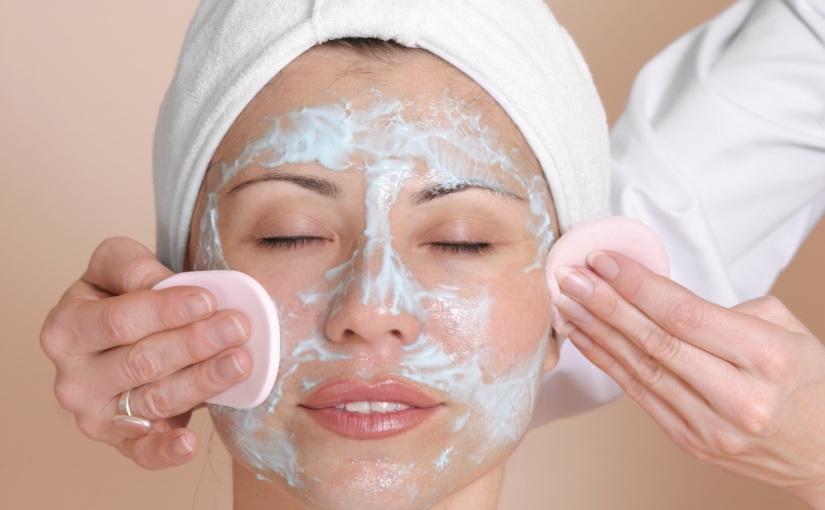In my previous post, I discussed that the most common reason for dehydration was a compromised barrier function. So initially this is what we want to focus on and restore. Once the barrier has been restored the skin will be able to hold the moisture within the skin and prevent trans epidermal water loss (TEWL).
Most people will go straight to products containing Hyaluronic acid to solve dehydration but this alone will not be enough.
The first thing to look at is your cleanser. These can be the main culprits, especially in clients with oily or acne skins. I find these clients tend to be after that squeaky clean feeling, but this tight, clean feeling we get after cleansing can be a sign of dehydration. Our cleansers need to be gentle but effective, not stripping, and maintain the skins natural PH. If your cleanser is giving you the tight feeling then its time to change!
Exfoliation is also a biggy. How often, what type, and the strength of your exfoliant is important to get right. Exfoliation and acids are a big thing at the minute with some skincare brands focusing on just that. However, if we go back to the barrier function we don’t want to overdo it and take off those layers that are part of that lipid bilayer within the stratum corneum. Exfoliation advice is as individual as you are so speak to your skincare professional who will advise you on how much your skin needs.
Hyaluronic acid is usually the go-to for dehydrated skin. However, don’t rely solely on this products to solve all your problems. In fact, in some cases, it can make those problems worse. Don’t get me wrong I love HA but under some circumstances, it’s not my immediate go-to active. HA is a humectant, which means it draws moisture in from where it can. This is great if you’re living in a humid environment, but if you’re sat at home or in an office with central heating or air-con, these create a dry environment. In these conditions what HA will do is draw up the moisture from the dermis into the epidermis, and that then maybe evaporated out of the surface with the rest of the moisture.
If we get our barrier function nice and strong and our environment isn’t too dry (turn down that thermostat) Then this active will definitely be on the list as a hydrator. HA can hold up to 1000 times its own weight in water, so get the above right and your skin will not only thank you but look dewy, fresh and plump all at the same time.
Avoiding occlusive products. Our skin needs a certain level of trans epidermal water loss (but not too much) to allow for more to be produced in the lower layers. If we use creams that are too occlusive this creates a barrier for that TEWL and our skin stop producing its own levels of moisture.
Diet. We can get extra moisture within our diet but this may not necessarily reach your skin. So up your water intake, it’s not the most effective way to hydrate your skin but what it will do is help drain out those toxins from the body and create healthier skin. It is also important to include the essential fatty acids within the diet, oily fish, avocado, nuts etc. all contain these or get extra through supplements. These EFA are components of our lipid bilayer, which makes up our barrier function.
Avoid any foods that will cause inflammation, and this may vary from person to person. But higher levels of inflammation can have an impact on how our body and skin functions. It can impact on barrier function, the natural production of hyaluronic acid, and how each and every cell in the skin functions.
So as you can see automatically reaching for the Hyaluronic acid will not solve all your problems when it comes to dehydration, it’s a case of combining all of the above to get you results.
Are you feeling dehydrated? or not sure what’s happening with your skin, and need help? I am offering FREE online consultations during lockdown so click here to book and we can get you on the track to hydrated, healthy, happy skin

